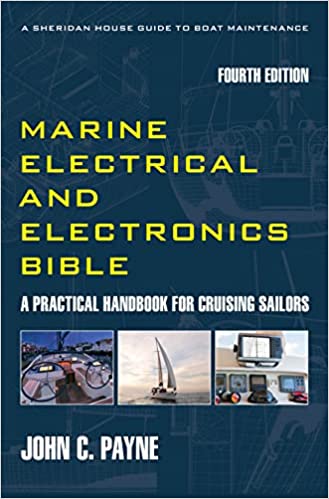GNSS Spoofing and Detection
GNSS spoofing and detection is a constant requirement. GNSS and GPS spoofing and jamming are escalating threats to global navigation systems, compromising safety, security, and operational reliability across critical sectors.
Global Navigation Satellite Systems (GNSS), including the U.S. GPS, European Galileo, Russian GLONASS, and Chinese BeiDou, underpin modern navigation, timing, and positioning services. These systems are vital to aviation, maritime, agriculture, telecommunications, and emergency response. However, their reliance on weak satellite signals makes them vulnerable to two major forms of interference: jamming and spoofing. As GNSS becomes more embedded in critical infrastructure, the stakes of interference grow. Governments, industries, and researchers must collaborate to harden systems, share threat intelligence, and enforce stricter controls on jamming devices. The future of safe, reliable navigation depends on proactive defense against these invisible but potent threats.
GNSS Spoofing and Detection
Jamming involves broadcasting noise or signals on GNSS frequencies to overwhelm legitimate satellite transmissions. This can cause receivers to lose lock, rendering navigation systems temporarily useless. Jamming devices are inexpensive and widely available, making them a growing concern in both civilian and military contexts. In recent years, incidents of GNSS jamming have surged, particularly in conflict zones and near borders, disrupting air traffic control, maritime operations, and logistics networks.
GNSS Spoofing and Detection
Spoofing, a more sophisticated threat, involves transmitting false GNSS signals to deceive receivers into calculating incorrect positions or times. Unlike jamming, spoofing can mislead users without alerting them. This poses serious risks to autonomous vehicles, aircraft, and ships, which may unknowingly follow erroneous routes. Spoofing has been used in cyberattacks, piracy, and geopolitical maneuvers, with documented cases in Eastern Europe, the Middle East, and Asia.
The 4th Edition of the Marine Electrical Electronics Bible Get your copy and start becoming self-sufficient and save money on expensive technician callouts.GNSS Spoofing and Detection
GPS problems are not that common anymore as GPS units have significantly improved in both terms of reliability and software. The electronics has improved as have most things and the system is no longer subject to deliberate degradation. The modern boat GPS is generally very reliable if properly installed and setup in accordance with manufacturers instructions. But there are factors that are beyond the average boaters control. But if your navigation depends on accurate GPS information you do need to understand the larger factors.
GNSS Spoofing and Detection
International agencies like the International Telecommunication Union (ITU), International Civil Aviation Organization (ICAO), and European Union Aviation Safety Agency (EASA) have raised alarms over the increasing frequency and complexity of GNSS interference. In 2025, EASA and IATA released a joint strategy emphasizing resilience-building, real-time detection, and cross-sector coordination to mitigate these threats.
Technological solutions include multi-frequency receivers, inertial navigation backups, signal authentication protocols, and interference monitoring networks. Field tests like Jammertest 2025 in Norway have demonstrated the effectiveness of these countermeasures under real-world conditions.
About GPS Problems and GPS Errors
Errors can be as great as 20-30 meters during the day and 5 meters at night. There is the Multipath Effect which occurs when signals from a satellite travelling to a receiver arrive at slightly different times due to reflection or alteration. The effect is that positions may be derived off the “bad” signal, resulting in an inaccuracy. Finally there is satellite integrity where the signal being transmitted from a satellite is corrupt due to a malfunction, and not very common.
What Causes GPS Error?
The GPS has inherent errors that decrease accuracy. There are GPS Clock Errors. Each GPS satellite has two atomic clocks and these are monitored against terrestrial atomic clocks. Based on this information, the entire GPS system is continually calibrated against UTC. There are ionosphere or space weather effects. Like radio signals, both ionosphere and troposphere conditions can affect GPS accuracy. That is where space weather impacts come in.
Space Weather GPS Problems.
Space weather is real and can cause problems with GPS. Errors occur in signal transmission times that can impose signal propagation delays. This signal refraction introduces timing errors that cause positional inaccuracies. Like radio propagation it alters given changes in atmospheric conditions, solar activity, etc. This can include ionospheric scintillation. The space weather can be from geomagnetic storms on the sun, increased sunspot activity, Coronial mass ejections (CME’s), solar flares and so on.
GPS and the Sun
The sun earth environment has a role to play in many issues. This is the region extending from the sun’s surface to the earths ionosphere and magnetic field. It is dominated by electromagnetic radiation and electrically charged particles emanating from the sun. The sun is by its’ violent nature prone to dramatic and violent changes, with events such as solar flares, and the resultant blast streams of radiation and energized particles that stream towards earth. The effects of space weather are dramatic on our communications systems and GPS marine navigation systems and all are affected by space weather. Understand the affects and how to deal with it. More great boat GPS information from fishing and boats.
